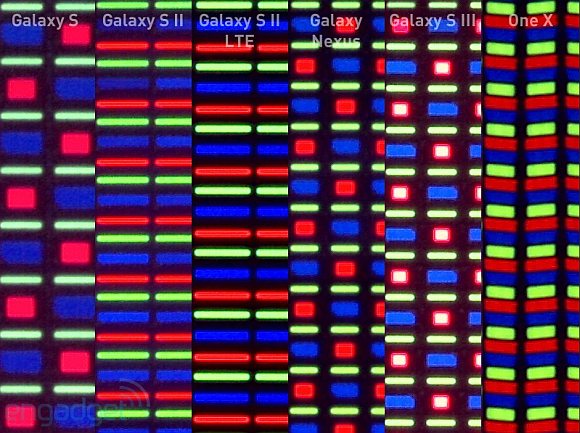When the Samsung Galaxy S III was announced, it came with a HD Super AMOLED PenTile display rather than its top of the line non-PenTile Super AMOLED Plus. Naturally there are those that criticise the choice of “downgrading” the display from its Samsung Galaxy S II. According to the a Samsung rep that Mobile Burn had spoke to, the decision was purely based on durability and longevity of the display.
Samsung has been a major user of AMOLED screens since its first Samsung Galaxy S which wowed users with its vibrant colours and saturated display. Although AMOLED looks great, there are some issues reported in terms of reliability with screens starting to deteriorate over time. According to Samsung the blue subpixels tend to wear out the fastest which is why they opt for the PenTile maxtrix to overcome such issue.
As seen on the microscopic image above from engadget, a PenTile display uses an arrangement of RGBG (Red Green Blue Green). This means there are more green subpixels compared to its red & blue subpixels. As a result, images doesn’t seem to appear as sharp with some users complaining odd distortion of high resolution icons on the screen. Is having a PenTile screen a big issue? With screens above 300ppi, the pixels would be too small for one to notice unless for those that nitpick down to ultra fine details.
The detail flaws of PenTile display is said to be noticable for screens with lower pixel density like a 4.3″ WVGA (800×480) of 217ppi or 7.7″ WXGA (1280×800) of 197ppi. This is where Super AMOLED Plus makes more sense to maintain image quality for the Samsung Galaxy S II and Samsung Galaxy Tab 7.7.
So does this mean Samsung inadvertently admitted that its Super AMOLED Plus is flawed in terms of reliability? Developing another display technology would be expensive and might just bring marginal performance increase.
Hit the source link to read the full article.
[ SOURCE, image credit ]







